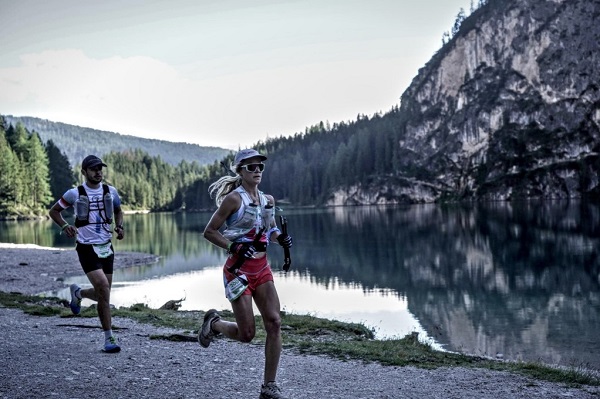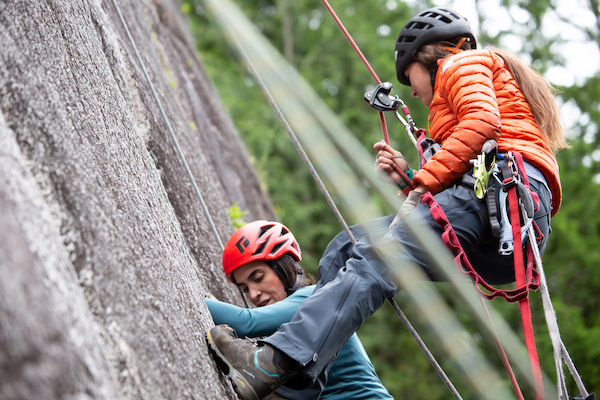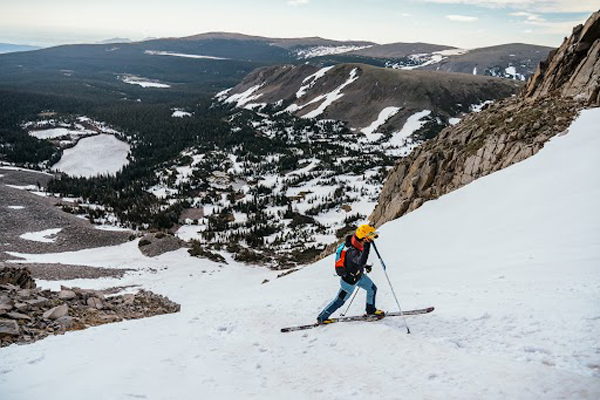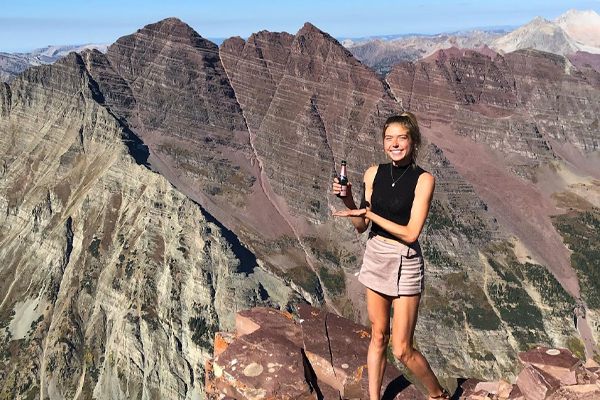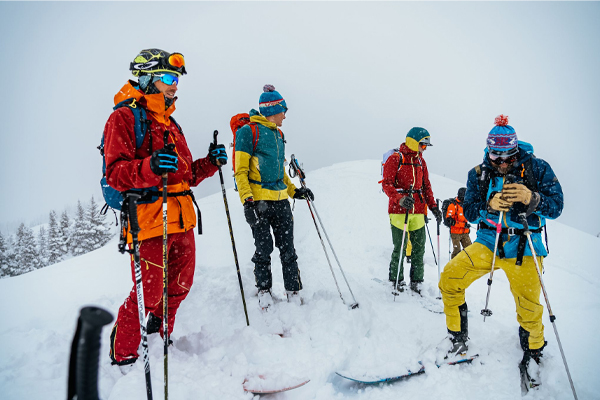John Gaston - Training for Skimo Off-Snow
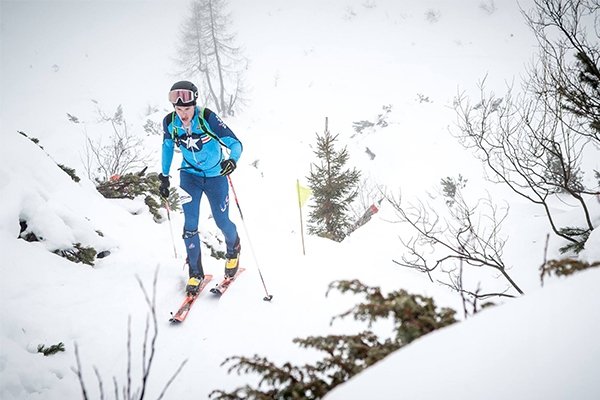
La Sportiva athlete John Gaston on how to train for skimo without the sport's essential element: snow.
- - -
Ski mountaineering was originally born from ski touring, the historic practice of strapping skis on one’s feet to move more efficiently between European alpine villages during winter, long before motorized transport. Today, ski mountaineering involves climbing mountains then skiing back down them and at a competitive level, getting from point A to point B- usually with a few peaks in between- as quickly as possible. Incorporating aspects of other snow sports like skinning, bootpacking, and downhill skiing, along with having running fitness, demands that skimo athletes have broad skill sets, and undergo rigorous training and preparation to compete at the top level.
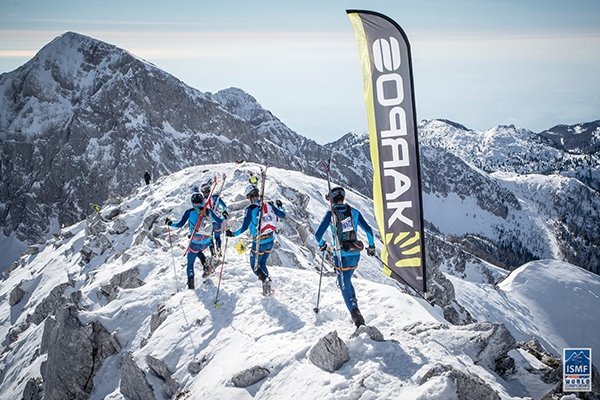
How do you train for Skimo when there is no snow?
Skimo rewards diversity in training. A great parallel for athletes of the sport to consider are our cross-country racing counterparts. Training the majority of their year off snow, and probably doing more cross training than any other elite endurance athlete, top tier XC skiers are all exceptional runners, cyclists, and gym rats. As a result, they truly redefine the concept of a “bulletproof” endurance athlete. I take a lot of my inspiration and ideas from their playbook - albeit with a heavy skimo-specific bias.
My training relies mostly on mountain biking and trail running. Biking allows me to log a ton of volume with significantly less impact on the body than running. By keeping some of the fast twitch muscles firing, I believe riding is better for building sustainable power and it is more conducive to longer efforts than running. There is much better natural recovery in descending on a bike versus on your feet, and allowing the rider to maintain a higher workload on the next climb (and the next). This is especially important for longer efforts, like 20 minute repeats, where you gain a lot of vertical in each interval, and it’s easy to run out of mountain if you can’t descend quick enough between each set.
While mountain biking in particular is also great for working on explosive power, I prefer to do my shorter efforts on foot. Above threshold work really builds the sport-specific musculature, so I find that doing my shorter, harder efforts through hiking or running uphill in the summer makes it a lot faster to transition straight to skis in the winter.
With a history of some weird lower leg and foot ailments, I also find that incorporating some trail running and gym strength training keeps my body feeling healthier than if I only stuck to riding.
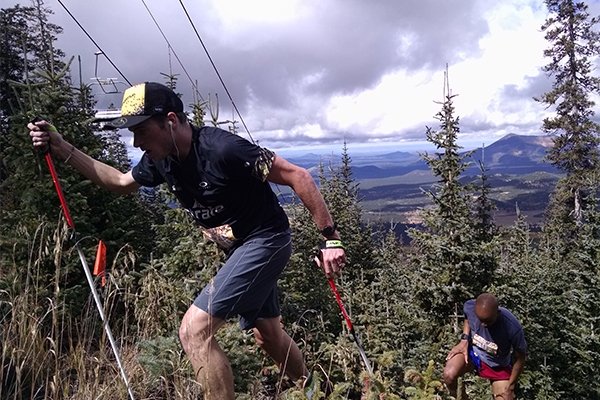
How do you incorporate trail running and trail racing into your summer training?
While general trail running does not translate well to skimo, I am a big believer in Vertical K’s (VK; a race with 1,000m vertical gain over no more than 5km in length) and very steep, very hard hiking. Aside from keeping the small muscles in your lower legs, ankles and feet strong and durable, it replicates the demands of uphill skinning/booting more closely than any other form of cross training. Steep hiking takes the running economy factor out of the equation - something that is critical to running success, but inconsequential to skimo speed and endurance. Power hiking, especially with poles (i.e. a properly steep VK race) is an excellent test of your overall aerobic engine, requiring similar recruitment in your glutes, hamstrings, and low back muscles to skinning in the winter. There’s also something beautiful about the simplicity of a VK: find a peak, get to the top of it as fast as you can. It’s a very simple, very instinctual process and one that I think a lot of mountain lovers can relate to, whether they’re runners, cyclists, or skiers.
What does a typical training cycle look like for you?
Training practically year-round, an average week for me ranges from 15 to 17.5 hours, with recovery or race weeks down to 10 to 12.5 hours, and bigger volume weeks 20 to 25 hours. At the end of the season, I take two weeks super easy and leave room for another two during the year for sickness, work, travel, etc., (like sitting here now, injured with four broken ribs).
The race season is about five months long, starting just after Thanksgiving and running through April. Even if you’re lucky enough to get on snow by November 1st, this still means that the majority of off-season training is done during the summer and fall months, off-snow. To compete continuously for five months- staying fast and consistent throughout- it’s really important to have that big base of off-season training behind you. It’s what teaches your body to recover and handle the stresses of week-in, week-out racing.
My weeks tend to follow a pretty similar schedule: two intensity days and one long day are always on the books. If it’s a volume-focused week, I’ll add another long day, and if it’s an intensity week, I’ll add another interval day. I prefer three to four week cycles of a big volume week, a high intensity week, followed by a “race” week (even if I’m not racing). It stresses your body and brain, but building in a recovery period in every cycle ensures you’re actually getting stronger and not just beating your head against the wall.
An average week for me in the middle of summer might look something like this:
•Monday: Rest Day
•Tuesday: 2.5hr Easy Mountain Biking (MTB)
•Wednesday: Morning- 2hrs. Running Intervals*: 8 x 4min of L4 Intensity** / Evening- 1hr Strength Training (in the gym)
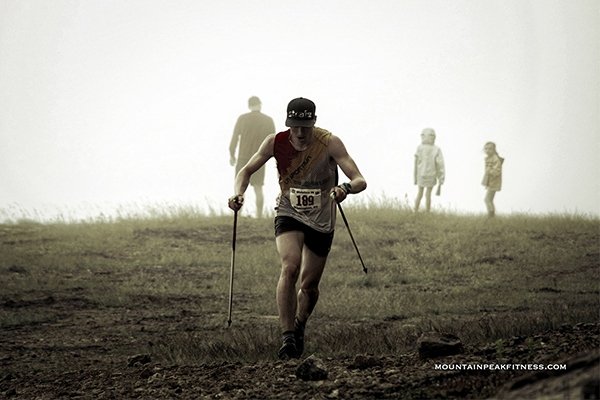
As the summer winds down, I start swapping out some of the riding with more running, and eventually the Sunday long ride turns into a long run. To stay motivated, a few times year I switch it up and do a “training camp” cycle, following a three-days-on, one-day-off cycle of heavy volume and intensity for two weeks. In the winter, a one training camp cycle looks like this:
•Day 1: Morning: 2.5hrs/2k meters of L4 Intensity / Afternoon: 1.5hrs/1k meters Easy
•Day 2: Morning: 3k meters Single Session / Afternoon: Core Strength
•Day 3: Morning: 2.5hrs/2k meters of L3 Intensity / Afternoon: Leg Strength and 1.5hrs/1k meters Easy
•Day 4: 1.5hrs/1k meters Easy Recovery
This is super demanding after a few cycles and I only do these “camps” when I know I’ll have extra time to spend on recovery. After all, you can only train as hard as you can recover! In the past, I’ve had great success after these blocks, but I’ve also gotten really sick too.
Training is always a bit of gamble; if you want to compete at the top, sometimes you need to take risks. I’m very structured in my training, admittedly at the expense of more fun adventure sometimes, but I’m a firm believer in the “make your hard days Hard, and your easy days Easy” mantra.
How do you balance work, life, training and racing?
Ask my wife! Ha. There’s no way around the fact that endurance training and racing is at some level a fairly selfish pursuit. To get to the top level requires a ton of commitment and that time has to come from somewhere. Sometimes family, friends, or work can suffer as a result, so it’s important to find a balance that works right for you and your particular situation. I’m fortunate enough to have an incredibly supportive wife and family who understand that sacrifices are sometimes necessary to reach my goals. I’m also fortunate that working at STRAFE lends itself to getting out and playing in the mountains on a near daily basis. It’s the cornerstone of our brand and something that La Sportiva also embraces whole heartedly. Brands in the outdoor industry are only as successful as the people behind them, and the best way to keep people happy and motivated is to make sure they’ve got time to get outside!
Preview & Photo 1:© International Ski Mountaineering Federation (ISMF)
Photo 2:© Michael Barlow
Photo 3:© The Ascend Collective
Related:
• Backcountry Skiing - More Accessible Than You Think
• Anton Krupicka - Switch to Skimo
- - -
ABOUT THE AUTHOR
 John Gaston is a member of the La Sportiva Ski Team.
John Gaston is a member of the La Sportiva Ski Team.
- - -


